Taoist Inner Alchemy and Human Design
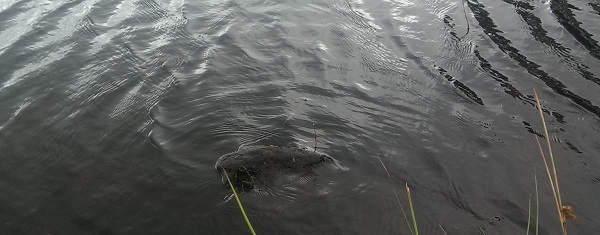
Ra Uru Hu, the originator of Human Design said that “Human Design offers a mechanical understanding of the nature of being.” He means mechanical in the sense of patterned and meaningful, rather than simply in the Newtonian sense. Astrology has also offered systematic insight into the nature of being, and Human Design creates maps of reality from the same starting point as astrology, but Human Design, drawing also on Taoist principles, offers a mechanical understanding of the nature of being that resonates with the Taoist view of reality. The greater part of Human Design knowledge focuses on how to understand and to develop Human Consciousness, including how to cultivate individual biological and psychological health, how consciousness works interpersonally, and how other forms of life are designed. There is also significant cosmological knowledge concerned with the evolution of life, consciousness, currently, in the past, and on into the future, and mystical information about incarnation, and dying.
Both Taoism and Human Design speak about reality as that which manifests from a hidden source. Human Design tells us that a significant evolution in human capacity took place in the late 18th century and that Human Design maps this new upgraded human capacity. We are at the very beginning of tracking this upgrade. Our traditional ways of dealing with life no longer adequately serve human potential as it exists now. To the extent that Taoist knowledge deals with specific aspects of human capacity, it deals with human capacity from a perspective that was transcended in the late 18th century. It can be seen that science and scholarship in current times increasingly leave people with questions about the adequacy and applicability of their understandings.
Taoism emphasises, in a way that is unique, the reality of emptiness. This is the precelestial focus.
To think and communicate effectively on the journey of Taoist Inner Alchemy we need a language that can talk about both the surface and the hidden. Since the mutation in the late 18th century we have acquired the capacity to live the synthesis of the surface and what is below the surface, yet until now we have only had the capacity to think and communicate with the language of surface reality. This is where there is an opening to deepen our understanding of both the reality in which we live now and the capacity of Human Design to make it understood. Taoist thought and language, although it comes from the long ago past, has the characteristics needed to bring out all the nuances of the new reality that is to be understood through Human Design.
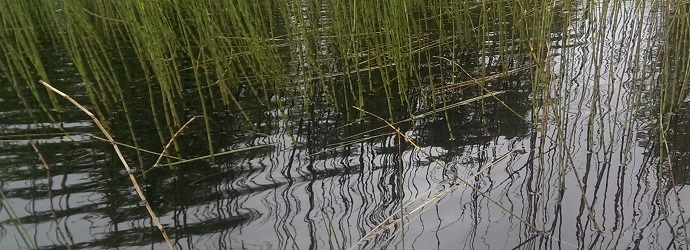
Isabelle Robinet, in her essay on Alchemical Language (page 18 - downloadable PDF here) speaks about the Taoists subtle view of the reality of emptiness. Human Design began to be taught in the later 1980's. The teaching was presented to people whose styles of communication and understanding were developed for the most part before the mutation in human capacity that took place in the late 18th century. The knowledge itself has the potential to enable an opening to styles of communication and understanding that are congruent with the new capacity. This however takes time and is a work in progress. The style of understanding and communication that the knowledge is presented in is suited to an earlier reality. In Taoist terms we can say that Human Design was presented in a postcelestial framework. There is a significant possibility for deepening the understanding of Human Design by re-evaluating the knowledge in the light of Taoist patterns of thinking.
In his book, Foundations of Inner Alchemy, Wang Mu points out that “Essence, Breath, and Spirit affect one another. When they follow the course, they form the human being; when they invert the course, they form the Elixir.” (Page 15.) The art of Taoist inner alchemy teaching is to articulate a practice of transformation that communicates inverting the course to those who are lost in following the course of ordinary life. The language has of necessity to be the language of following the course, postcelestial, while communicating a sense of the hidden path into inverting the course, and a sense of the opening to precelestial reality. The Taoist inner alchemy teachings do this effectively by laying out a series of inscrutable insights into reality and into practices to follow, and by suggesting the admonition to get the help of a guide who has travelled the path. The guide is needed because the teachings do not address in detail the particular challenges that the individual will encounter, and the seeker needs to discover the truth through their own efforts and on their own authority. The detailed information that is available through the Human Design system makes it practicable for the seeker to negotiate inverting the course with detailed and accurate information about themselves, their conditioning, and the particular and unique nature of their own way of completing the journey of transformation.
In this synthesis of Taoist inner alchemy and Human Design we follow the way of Taoist inner alchemy, looking to deepen our understanding of Human Design through the view of Taoist Alchemy and looking to make concrete on the level of individual uniqueness the open ended precepts of Taoist inner alchemy.
Laying the foundations.
Before looking to the issues of replenishing Essence, Breath, and Spirit, we need to grasp the core understandings of the Taoist approach to reality, the precelestial view.
The Zhuangzi (section 12) says, "In the Great Beginning, there was nonbeing; there was no being, no name. Out of it arose One; there was One, but it had no form. Things got hold of it and came to life, and it was called Virtue. Before things had forms, they had their allotments; these were of many kinds, but not cut off from one another, and they were called fates. Out of the flow and flux, things were born, and as they grew they developed distinctive shapes; these were called forms. The forms and bodies held within them spirits, each with its own characteristics and limitations, and this was called the inborn nature. If the nature is trained, you may return to Virtue, and Virtue at its highest peak is identical with the Beginning. Being identical, you will be empty; being empty, you will be great. You may join in the cheeping and chirping and, when you have joined in the cheeping and chirping, you may join with Heaven and earth. Your joining is wild and confused, as though you were stupid, as though you were demented. This is called Dark Virtue. Rude and unwitting, you take part in the Great Submission."

The Zhuangzi speaks here about the subtle structure of reality, of our journey of creation and inversion, of how we find ourselves wild and confused, stupid and demented, rude and unwitting, in the grip of Dark Virtue, our structured lostness, submitting to the journey of inner alchemy, thus training our nature so that we can return to Virtue, and rest in our uniquely structured foundness.
Taosim maps the subtle structure of reality according to the I Ching. It is believed that the Taoist mapping of subtle reality was a result of mystical observation of the patterns of nature. Human Design maps reality systematically and in great detail, and there is agreement between the patterns that arise in both approaches. In Human Design the manifestation of Tao is accounted for as a consciousness field orchestrated by the movements of planetary bodies in the solar system. This field, changing moment by moment, always evolving, is the active principle that imprints manifest reality. All of life in the solar system including human incarnation gets defined by the imprinting field and we experience moment by moment the changes in this field. We are defined both in our truth and in our lostness by it. Human Design provides keys for us to understand and track these phenomena. The moment to moment mapping is systematically represented by the Human Design computer software and is interpreted through the Human Design knowledge. An introduction to Human Design perspectives is downloadable here and a video introduction by Ra Uru Hu can be found here.
At the start of our journey we need to be clear that it is a journey of inversion. Liu Yiming talks about false yin and false yang. False yin follows desire for lived experiences where we feel we are not living well, and where our minds are running over the needs and nature of our bodies. False Yang follows our attraction to mental and spiritual experiences that are sought because they are stimulating. In the journey of inversion we contain these propensities so that we can refine false yin and false yang. As we do this we may feel that the real self is being lost and this can be disorienting and frightening. It takes courage to trust the journey of inversion and to relax and remain present and conscious to the confusion and difficulty. In the journey of inversion a kind of humility is of value that accepts that one engages with the process of inversion with courage and commitment, and that nothing more is to be done to help it other than that which is needed to contain and nourish it, and that it is otherwise best to maintain a hands off surrendered allowing of what is happening by itself, one that, no matter how good the intention may seem nor how right the thought may appear to be, is simply disciplined in its aware involvement in the process occurring. This is the essence of youwei, an ability to commit to a particular objective, to do what objectively needs to be done to support and nourish the process, and otherwise refrain from unnecessary active busyness with the process.
We need to have a robust understanding that xing and ming, the polarities of consciousness and form in our incarnate selves, mutually intermingle, and should not be seen as separate. False yin and false yang thrive on the splitting apart of the mutuality of xing and ming. The journey of inversion cannot take place without a good grasp of the mutuality of xing and ming.
Before investing in replenishing essence, breath, and spirit we need to take a relaxed look into the actual state of health or otherwise of our essence, our breath, and our spirit. We also need to gather a sense of how harmonious or disharmonious is the relationship between our three treasures, and we need to gather a sense of how refined or unrefined in us are each of these treasures. Essence is the material constitution and the biological functioning of our bodies, focused in life generative creativity. If the nutritional integrity of the body is weak or the body is not loved, respected, considered and cared for then essence will be deficient. Breath, also called chi, shows itself as aliveness and vitality. When the breath is strong, one's aura is full and there is a palpable sense of presence and aliveness detectable in and around one. If essence is deficient it is difficult to cultivate a full and healthy breath. Spirit shows itself as awareness, intelligence, and awakeness. When spirit is healthy mind is relaxed, clear, and capable, and we have capacity to perceive reality with intensity and accuracy. If breath is deficient it is difficult to cultivate healthy spirit. Essence, breath, or spirit can be deficient or excessively developed. Excessive development of one will deplete the others and deficient development of one will limit development of the others. If essence, breath or spirit are insufficiently refined in relation to the others this also creates disharmony.
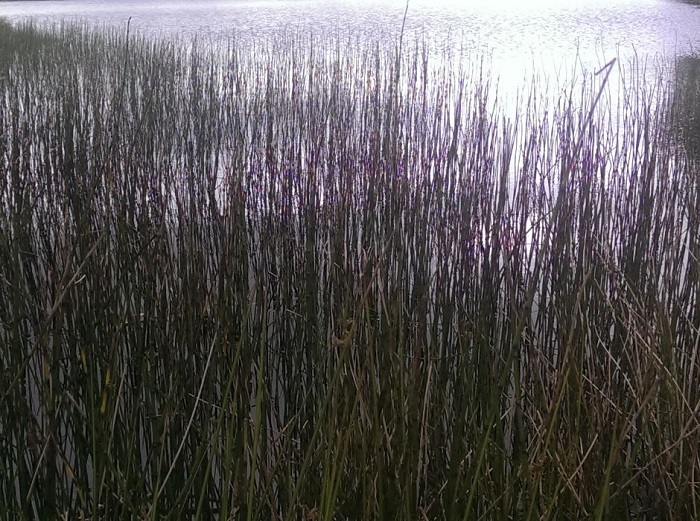
The first aspect of laying the foundation is guarding the opening. The significance of guarding the opening is both subtle and of overriding importance in the sense that if we are not always conscious of guarding the opening in relation to any other aspect of the journey in inner alchemy, we will miss the core intent of that aspect, and of the journey itself. The subtle birth of new consciousness takes place at the opening. It comes long after expectation has disappeared, mysterious, strange, and apparently of no significance, easy to overlook. The opening is also known as the Mysterious Female. The Mysterious Female is described as "Valley of Empty Non-Being — Root of Heaven and Earth — Mystery and then again Mystery — Gate of All Wonders"
“The valley spirit never dies;
We call it the mysterious female.
The gates of the mysterious female—
These we call the root of Heaven and Earth.
Subtle yet everlasting. It seems to exist.
In being used, it is not exhausted.”
(From Lao-Tzu Te-Tao Ching translated by Robert G Henricks)
Ordinary postcelestial living, following the course, leads to distorted essence as false yin, distorted spirit as false yang, and the shutting down of breath. Inverting the course involves practises that dispel false yin by a discipline that attunes to true essence, and dispel false yang by a discipline that attunes to true spirit. In the process breath will return. Taoist inner alchemy invokes practises that work with ming and xing together, that are healing, strengthening, and meditative in nature, serving to cultivate the turn from following the course to inverting the course, while guarding the opening.
Human Design provides a refined focus for this process which it calls strategy and authority. Strategy is a Human Design practise that assists one to tune in to the capacity of ming to express the nature of true resolved essence. Authority is a Human Design practise that assists one to tune in to the capacity of xing to express the nature of true resolved spirit. As we become more adept with the combined practise of strategy and authority, false yin is dispelled, false yang is clarified, and we experience the loss of these as coming closer to the opening. This process is assisted by each person having available explicit Human Design information about the unique nature of their false yin and false yang issues, and by having available explicit Human Design information about what constitutes their natural characteristics when they have dispelled false yin and clarified false yang.
“What’s important is frequency. The key to understanding what we are mystically is to understand that we are potentially perfect frequency. This is what it’s about. All the rest of it, all the accoutrement, all the way we look at it and think about it and everything else, it is the frequency in the end that matters. And the frequency is something that is mechanical. You cannot adjust your frequency from the mental plane. You adjust your frequency through the form. It’s where it begins. And then there is the slow process of attuning the personality to that frequency.”
(Ra Uru Hu – Rave Cosmology VI – page 153.)
Refining Essence to Transmute it into Breath.
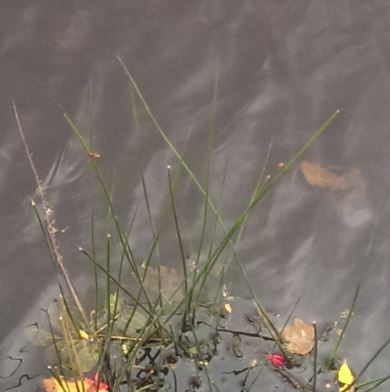
What was begun in Laying the Foundations continues and intensifies in this stage of development. It is the arduous stage of burning off conditioning, false yin, and false yang. Four trigrams symbolize the components of this stage. Precelestial or pure yin is called Kun, earth, and represented thus ☷. Precelestial or pure yang is called qian, heaven, and represented thus ☰. Postcelestial yin, yin encompassing yang, is called kan, water, and represented thus ☵. Postcelestial yang, yang encompassing yin, is called li, fire, and represented thus ☲.
Postcelestial yin, while going with the course of life, is the energy and passions in activity, the phenomenon of life lived for the satisfaction of bodily desire. Postcelestial yang, while going with the course of life, is mental consciousness in action, the phenomenon of thoughts pursued for their own sake, the living out of mental desire. The middle line in kan represents the seed of possibility that, through inverting the course of life, a quality of precelestial yang can bring calm, clarity, and lightness to the energy and passion of life, and the middle line of li represents the possibility that, through inverting the course of life, a quality of precelestial yin can bring stillness, awareness, and awakeness to the busy thoughts of the mind.
When we can be aware of our passions they can come to rest, and when we can stabilise our thinking we can be mindful. The combined force of the absence of clarity, and lightness in the energy and passion of life, and the absence of stillness, awareness, and awakeness in the mind, stops aliveness, and we lose the breath of life. This stage of transformation restores and strengthens the aliveness of breath.
The key is in bringing to life the seed of pure yang in the body and in bringing to life the seed of pure yin in the mind. This is done through a discipline of bringing attentiveness to the unconscious sensations in the body and through a discipline of becoming aware that thinking takes place in the body and can therefore come to rest in the body.
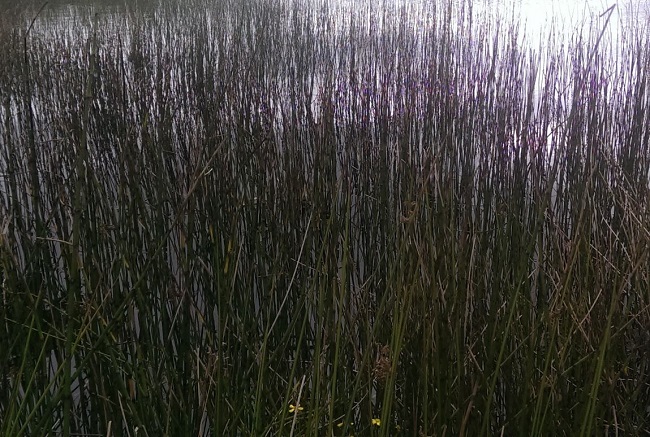
Human Design can enable this process by providing insight into each unique persons appropriate discipline for inverting the course, their strategy and authority, and by providing insight into each unique persons pattern of conditioning thus supporting it's inversion. Human Design can also provide insight into how each unique person can restore the nutritional integrity of the body and attend to what kind of environmental context supports the body in being loved, respected, considered and cared for. This practice is best introduced when one is well established in following one's strategy and authority, and at home in the process of inverting the course in pursuing the cultivation of the seeds of pure yin and pure yang within kan and li.
This stage requires considerable clarity about one's relationship to doing. The kind of doing that is associated with going with the course of life, a goal oriented, achieving mindset, “going for it,” is not helpful. Youwei is the kind of doing that supports inverting the course of life. It is gentle and firm, relaxed and committed to the process without stress and anxiety about the outcome. One senses that if one's intention is slack the journey will stall.
One will know one is progressing well in this stage when Wang Mu's statement, “When Essence is full, one does not think of desires; when Breath is full, one does not think of food; when Spirit is full, one does not think of sleep,” makes sense.
Refining Breath to transmute it into Spirit.
The beginning of this stage is an acceptance of surrender and a realization of the helplessness of the conditioned self trying to keep on going with the course. One has developed resilience, capacity for and comfort in inverting the course of life, although uncomfortable and devastating times continue to occur. Living through the disappearing of the conditioned self takes great courage and care. One notices a quality of buoyancy and serendipity in the process as the journeying seems to go better when one is not engaged in journeying. This is the opening to wuwei.
The issue that remains is that, although one knows that one's identified self and its relationship to mundane reality is not real or not necessary for life, it is still very much part of life and peculiarly stubborn, interfering, and unhelpful. This stage is the stage of letting go of the constant arising of this identified self. Although it doesn't run the show it hasn't given up desiring to.
The process of dissolving the grip of this identified self, although it happens through surrender to life and through allowing wuwei to take over, is also the most challenging. It is a surprise that life itself can carry us through the rest of the journey, realizing that the conditioned self is not useful, but this does not mean that it is any less devastating. It is the most vulnerable stage and care for ones protection and safety are paramount. It is now the time of the internal medicine and of superior virtue.
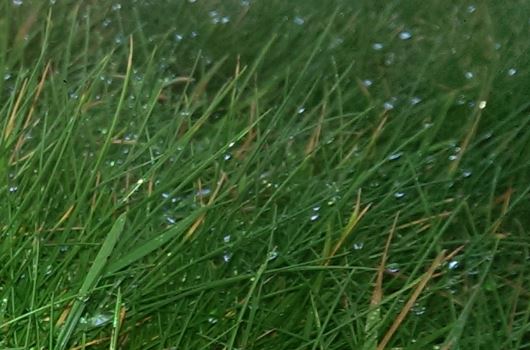
Human Design comes into its own in this stage. Through the understanding of an aspect of Human Design which is called Rave Psychology, one can track and release the underpinnings of subtle conditioning that maintain the traditional identity in attempting to have its say, and that keep us engaged in the stubborn grasping of mundane societal reality.
If you are actually a dolphin although you believe you are human, you can't relax and swim at the same time. You believe you have to make a focused effort or you will drown. If you become aware that you really are after all a dolphin, you can relax and just swim because it is your nature to be in the water and you won't drown, whereas while you were a dolphin thinking you were a human, you couldn't relax while swimming, even though in reality you could have relaxed but didn't because you thought you would drown if you didn't make an effort.
It is something like another version of the ugly duckling story where one finds that, although one always thought one was human and intimately involved in humanity's story, one discovers that one is and has always been a dolphin masquerading as a human, and that one can swim better than one can walk.
In this stage it becomes very clear that any short cuts or mistakes in the previous stages are dangerous. It is not at all a good idea to indulge any ambition to get to this stage or to attempt short cuts in a spirit of eagerness and urgency. It will either be dangerous or one will find oneself in a grotesquely distorted experiment that is badly off track.
Refining Spirit to return to Emptiness.
The culmination of the previous phase is customarily thought of as enlightenment. It is the peculiar genius of the Taoist approach to see a final stage of the journey where spirit is to become one with Tao. Spirit itself embraces inversion to non-existence, endarkenment. The inversion continues towards the ultimate realization of peace, rest, and cessation. There is not a lot said about how this refinement takes place.
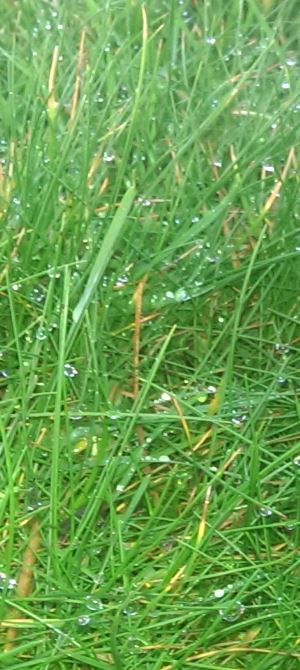
Human Design understands the fundamental reality of human life as a collaboration between three fundamental entities, a design crystal, a magnetic monopole, and a personality crystal. Each is an aspect of Tao. The design crystal is the organising principal of ming as form, the magnetic monopole is the navigator of the form and the attractor of the personality crystal. The personality crystal is the organising principle of xing as spirit. Birth is the coming together of the three, life is the journeying together of these three and when their journey together is over they separate and return, each in their own way to Tao. In Human Design terms the stage of refining spirit to return to emptiness is the peak intimacy of yin and yang in manifest reality. It speaks to the deepest aspect of the meaning of life and of reality.
To Be Awake is to Allow Life to be Life (Ra Uru Hu)
“This is basically what it means to be awake. To be awake is to allow life to be life. It’s not about interfering with it. It’s not about trying to control it or manipulate it. It is simply about witnessing it and witnessing it through your perfection. And this perfection is not difficult to attain. It’s not. It’s about courage and discipline. It is about commitment. There are two kinds of beings in Human Design. There are those that will hold onto their Strategy and Authority as a way of making their life less burdensome. And that’s a beautiful thing. And it is true for most beings that have entered into the experiment. And then there are those that are radical. There are those that will not be satisfied until they have reached that state where they fulfil their unique purpose. And to do that begins with the form principle and ends with the mind. To go through the various steps of transformation there are no mysteries here. Truly, there are no mysteries. It is mechanical. There is a methodology for each step. And it is simply a matter of surrendering to that process and allowing that process to become your life. And in doing so the potential is there for transcendence.”
Obsidian Essence is for those who are attracted to the radical journey.